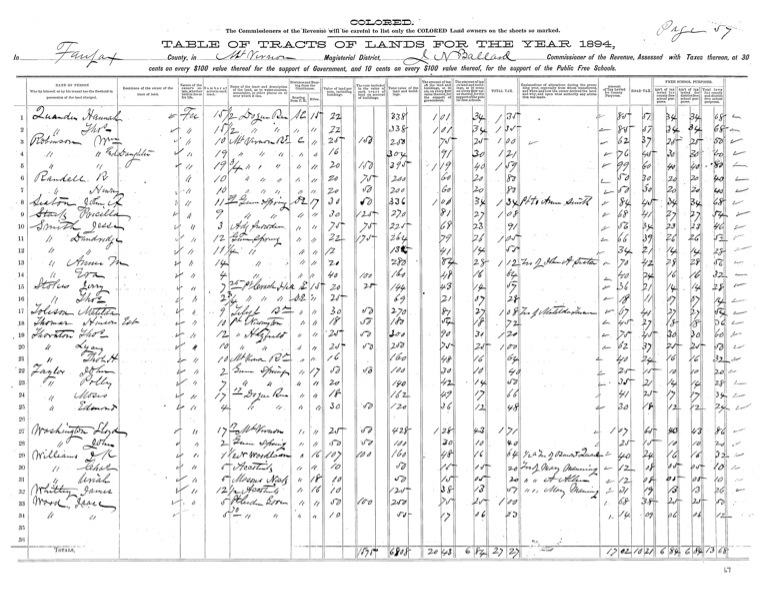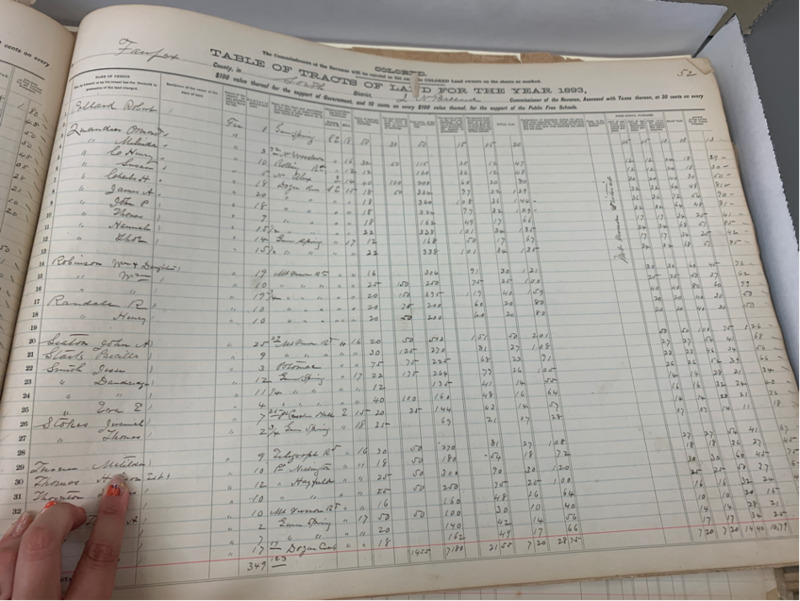Matilda Tolison
Matilda Tolison was an African-American landowner who lived in Mount Vernon, Fairfax County, Virginia in the late 1800s and early 1900s. This web exhibit provides access to the limited evidence from Tolison’s life and provides a brief biographical entry as part of the Black Lives Next Door initiative at George Mason University, sponsored by the Center for Mason Legacies.
It was difficult to construct a flawless timeline of Tolison’s past considering what little was known about all Black landowners, especially Matilda Tolison. The researcher began by doing their own research on databases such as ancestry.com, but nothing was found. The next step was to go to the Virginia Room of the Fairfax County Public Library and work with the librarians to find any records, but nothing was found again. Fairfax County Circuit Court’s Historic Records Center and look for any deeds associated. The archivists there assisted the researcher in locating any records, but no deeds were found, so the next step was to analyze the Land Tax Records. With the archivists' help, the researcher began looking for any records around 1894. This was because, in class, the researcher was originally given a scanned version of the “Colored” 1894 Mount Vernon District “Table of Tracts of Land for the Year 1894” [4]. Thus, they knew to begin with records around 1894, since Tolison was recorded to have paid tax during this year on her land in the Mt. Vernon district, VA. Going back one year at a time, the researcher found that there was another record of her paying tax in 1893, but no record in 1892. With that, the researcher knew Tolison’s earliest land tax records were in 1893 [3].
To find her most recent tax records, the researcher looked for a mention of her name in every year’s land tax records from 1894 until 1911. Tolison appeared in the 1910 records, but her name disappeared in the 1911 land tax records for Mount Vernon, Fairfax County, VA [2]. It was easier to look for her name after 1891 considering that is when the records began being separated by race [1]. Thus, by knowing the race and earliest tax records, it was not difficult to find future records. These records showed the individual mentioned by last name and first name, who paid the tax on the land, the acreage of the land, where it was located, and the land’s net worth and tax paid on it.
Tolison’s first record is seen in the 1893 Land Tax Book “Colored” records as paying taxes on around nine acres of land [3]. This is substantial for all those in the Black communities in the Fairfax County, VA area considering how difficult it was for colored folks to own land compared to white folks. When the researcher was analyzing the land tax records in the Fairfax County Circuit Court’s Historic Records Center, there were over quadruple the amount of white landowners than black landowners [2,3]. Nine acres of land was around the average acreage when compared to other Black landowners, especially considering she also resided in a home on the land. There are no records of Matilda Tolison on any deeds. On some tax records, Tolison is written as ‘Matilda Tolison/Travis’ as seen in the 1910 tax records [2]. That name also does not appear on any deeds.
This research showing provides the opportunity to explore historic records and learn more about the past with the segregation of whites and colored folks as well as how landownership was at the time, especially considering how the whites and colored folks were treated and delegated in the ninetieth to twentieth centuries. The next few pages will highlight and piece together important elements of Tolison’s landowning experience, how communities and livelihoods were like at the time in the region, and how authoritative involvement were influential.
[1] Library of Virginia, “Research Notes Number 1” revised September 2001. https://www.lva.virginia.gov/public/guides/rn1_landtax.pdf
[2] Land Tax Record book (1910, 1911), Historic Records Center Fairfax County Circuit Court
[3] Land Tax Record book (1893), Historic Records Center Fairfax County Circuit Court
[4] Land Tax Record book (1894), Historic Records Center Fairfax County Circuit Court
By Alaa Guennouni

